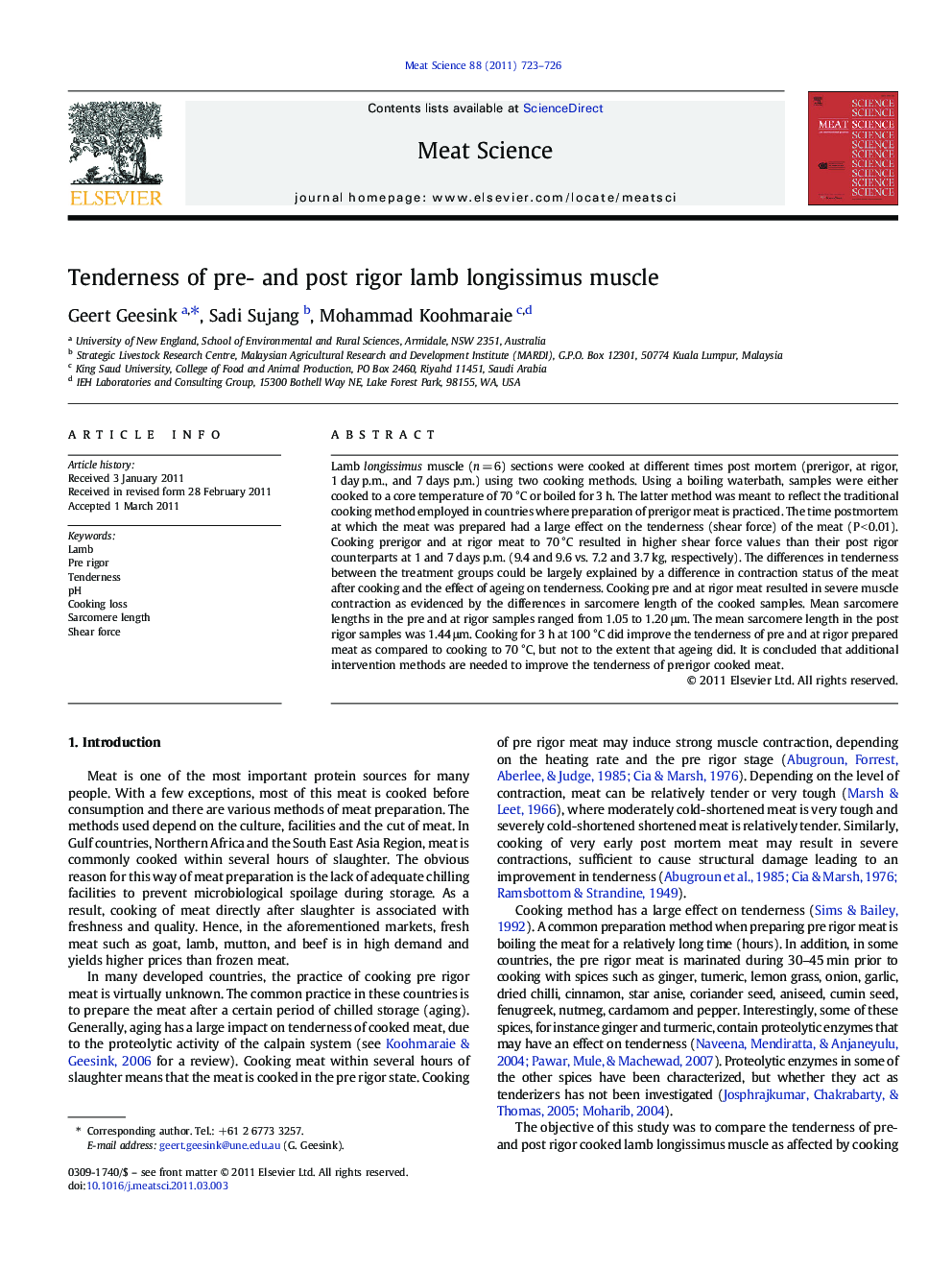| کد مقاله | کد نشریه | سال انتشار | مقاله انگلیسی | نسخه تمام متن |
|---|---|---|---|---|
| 2450535 | 1109654 | 2011 | 4 صفحه PDF | دانلود رایگان |

Lamb longissimus muscle (n = 6) sections were cooked at different times post mortem (prerigor, at rigor, 1 day p.m., and 7 days p.m.) using two cooking methods. Using a boiling waterbath, samples were either cooked to a core temperature of 70 °C or boiled for 3 h. The latter method was meant to reflect the traditional cooking method employed in countries where preparation of prerigor meat is practiced. The time postmortem at which the meat was prepared had a large effect on the tenderness (shear force) of the meat (P < 0.01). Cooking prerigor and at rigor meat to 70 °C resulted in higher shear force values than their post rigor counterparts at 1 and 7 days p.m. (9.4 and 9.6 vs. 7.2 and 3.7 kg, respectively). The differences in tenderness between the treatment groups could be largely explained by a difference in contraction status of the meat after cooking and the effect of ageing on tenderness. Cooking pre and at rigor meat resulted in severe muscle contraction as evidenced by the differences in sarcomere length of the cooked samples. Mean sarcomere lengths in the pre and at rigor samples ranged from 1.05 to 1.20 μm. The mean sarcomere length in the post rigor samples was 1.44 μm. Cooking for 3 h at 100 °C did improve the tenderness of pre and at rigor prepared meat as compared to cooking to 70 °C, but not to the extent that ageing did. It is concluded that additional intervention methods are needed to improve the tenderness of prerigor cooked meat.
Journal: Meat Science - Volume 88, Issue 4, August 2011, Pages 723–726